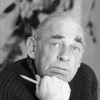Alvar Aalto

Alvar Aalto
Hugo Alvar Henrik Aaltowas a Finnish architect and designer, as well as a sculptor and painter. His work includes architecture, furniture, textiles and glassware. Aalto's early career runs in parallel with the rapid economic growth and industrialization of Finland during the first half of the twentieth century and many of his clients were industrialists; among these were the Ahlström-Gullichsen family. The span of his career, from the 1920s to the 1970s, is reflected in the styles of his work, ranging...
ProfessionArchitect
Date of Birth3 February 1898
CityKuortane, Finland
Just as it takes time for a speck of fish spawn to develop into a fully grown fish, so, too, we need time for everything that develops and crystallizes in the world of ideas. Architecture demands more of this time than other creative work.
We should work for simple, good, undecorated things
We have almost a city has probably two or three hundred committees. Every committee is dealing with just one problem and has nothing to do with the other problems.
The tubular steel chair is surely rational from technical and constructive points of view. It is light, suitable for mass production, and so on. But steel and chromium surfaces are not satisfactory from the human point of view.
Even the smallest daily chore can be humanized with the harmony of culture.
It is the task of the architect to give life a gentler structure.
Architecture is not merely national but clearly has local ties in that it is rooted in the earth.
In almost every task involving form, there are dozens, often hundreds of contradictory elements, which need to be forced to work in harmony by man's will. This harmony can be acheived only through art.
The best standardisation committee in the world is nature herself, but in nature standardisation occurs mainly in connection with the smallest possible units: cells. The result is millions of flexible combinations in which one never encounters the stereotyped.
True architecture exists only where man stands in the center.
I tell you, it is easier to build a grand opera or a city center than to build a personal house.
The most difficult problems are naturally not involved in the search for forms for contemporary life. It is a question of working our way to forms behind which real human values lie.
We should concentrate our work not only to a separated housing problem but housing involved in our daily work and all the other functions of the city.
I do not write, I build.